Motor Vehicle Records Monitoring Explained

Motor vehicle records (MVRs) are a critical part of workforce compliance and risk management. For companies that employ drivers, whether in logistics, delivery, rideshare, healthcare transport, or field service, ensuring employees maintain safe and valid driving records is non-negotiable. An expired license, a suspended credential, or a history of traffic violations can create serious liability for employers.
MVR monitoring provides an ongoing way to track driver records after hire. Instead of relying on annual rechecks, organizations can receive real-time alerts when something changes, allowing them to take immediate action. Let's look at what MVR monitoring is, why it matters, the industries where it is most relevant, the challenges employers face, and how technology platforms like Vetty make monitoring easier to implement.
What is Motor Vehicle Records Monitoring?
Motor vehicle records monitoring is the process of continuously tracking employees’ driving histories. Employers are alerted when changes occur, such as:
- License suspensions or revocations
- Expired or lapsed licenses
- New violations such as DUIs or reckless driving
- Accumulated points on driving records
- Serious traffic offenses or accidents
By monitoring in real time, companies can act quickly to prevent unsafe drivers from operating vehicles on behalf of the organization.
Why MVR Monitoring Matters
Safety and Liability
Employers are responsible for ensuring that employees who drive as part of their jobs are safe and qualified. An unmonitored workforce can lead to incidents that result in accidents, lawsuits, and reputational harm.
Compliance With Regulations
Certain industries, such as trucking and commercial transportation, are regulated by agencies like the Department of Transportation (DOT). These employers must demonstrate that drivers hold valid licenses and meet safety requirements.
Cost Control
Insurance premiums often increase when organizations experience claims tied to unsafe drivers. Monitoring reduces incidents, which can lower costs over time.
Trust With Customers and Clients
Organizations that operate delivery, transportation, or field service teams rely on customer trust. Demonstrating that drivers are continuously monitored reinforces that commitment to safety.
Industries That Rely on MVR Monitoring
Commercial Trucking and Transportation
The DOT and Federal Motor Carrier Safety Administration (FMCSA) impose strict requirements on commercial drivers. Continuous monitoring ensures compliance with federal standards.
Delivery and Logistics
From last-mile delivery to food services, companies depend on safe drivers to fulfill customer promises. Monitoring ensures that drivers remain eligible.
Rideshare and Gig Economy
Companies in the gig economy are under scrutiny for safety. Ongoing driver monitoring reduces risks associated with independent contractors and high-volume hiring.
Healthcare and Patient Transport
Medical transport services must ensure drivers are qualified to safely transport patients. Monitoring ensures compliance and protects patient well-being.
Field Service Organizations
Utility companies, construction firms, and home services rely on employee drivers. Monitoring helps prevent liability when employees operate company vehicles.
How MVR Monitoring Works
- Baseline screening
Before hire, employers run an MVR check to establish the driver’s history and license status. - Continuous enrollment
After hire, employees are enrolled in a monitoring program that provides real-time or periodic alerts. - Alert system
Employers receive notifications when licenses expire, suspensions occur, or violations are recorded. - Decision making
HR or compliance teams evaluate alerts to determine next steps. For example, a suspended license may require removing an employee from driving duties until reinstated. - Documentation
Every action taken is recorded to demonstrate compliance with safety and regulatory standards.
Benefits of Continuous MVR Monitoring
Proactive Risk Management
Instead of discovering expired or suspended licenses during annual checks, employers can act immediately when issues arise.
Lower Insurance Costs
Insurers view continuous monitoring as a proactive safety measure, which can help reduce premiums.
Improved Workforce Safety
Monitoring ensures that only qualified employees operate vehicles, reducing accidents and protecting both staff and the public.
Simplified Compliance Audits
With automated systems, employers can generate compliance reports quickly, reducing the administrative burden of audits.
Challenges in MVR Monitoring
Data Accuracy and Availability
Not all states provide the same level of real-time access to records. Employers must work with vendors that have reliable data pipelines.
Employee Privacy Concerns
Monitoring must be handled in a transparent way. Employees should understand that MVR checks are conducted to protect safety and comply with regulations.
Administrative Burden
Without automation, manually reviewing records and acting on alerts can overwhelm HR teams.
Multi-State Operations
Companies with drivers in multiple states must navigate different rules, systems, and reporting structures.
Best Practices for Employers
- Identify safety-sensitive roles
Only roles that require driving should be subject to ongoing MVR monitoring. - Communicate clearly with employees
Explain what will be monitored and why. Position monitoring as a safety and compliance tool. - Automate license renewals
Use monitoring systems that provide alerts before licenses expire. - Set clear policies for violations
Define how the organization will respond to different types of violations. For example, a suspended license may result in temporary reassignment, while a DUI could lead to termination. - Leverage technology
Implement platforms that integrate with HR systems and provide real-time dashboards for compliance.
The Role of Technology in MVR Monitoring
Technology has transformed MVR monitoring into a streamlined process. Automated systems pull real-time data from state motor vehicle departments and push alerts directly to HR dashboards. Integration with human capital management (HCM) platforms ensures compliance data is centralized and easy to access.
Mobile-first technology also improves employee engagement by providing visibility into the status of their records. Automated workflows can handle license renewals and reminders, reducing manual effort for HR teams.
Why Vetty is a Strong Solution
Vetty provides a unified monitoring solution that includes motor vehicle record tracking. Unlike traditional providers that rely on annual rechecks, Vetty delivers real-time alerts when driver records change. Employers can configure workflows to automatically track license renewals and receive notifications before credentials expire.
VettyComply™ integrates seamlessly with HR platforms, making compliance reporting simple and accessible. Its mobile-first design ensures employees stay engaged and informed throughout the process. By embedding monitoring directly into the workforce lifecycle, Vetty helps employers reduce risk, protect customers, and maintain compliance without adding administrative burden.
Frequently Asked Questions
What is the difference between an MVR check and MVR monitoring?
An MVR check is a one-time review of an employee’s driving record before hire. Monitoring provides ongoing updates and alerts after hire.
Is MVR monitoring required by law?
In certain industries, such as commercial trucking, monitoring or frequent rechecks are required. For other industries, it is considered best practice to reduce risk.
How often are driver records checked?
With monitoring, records can be checked daily or as soon as updates are made available by state agencies.
Does MVR monitoring apply to personal vehicle use?
Monitoring typically applies only when employees drive as part of their job responsibilities.
How does MVR monitoring affect insurance?
Insurance providers often view monitoring as a proactive safety measure, which can lead to lower premiums.
Conclusion
Motor vehicle records monitoring is an essential compliance tool for organizations that rely on drivers. By shifting from annual rechecks to continuous monitoring, employers can proactively identify risks, reduce liability, and demonstrate a commitment to safety.
With Vetty, organizations gain access to a platform that automates MVR monitoring, integrates with existing systems, and engages employees with a modern, mobile-first experience. For HR and compliance leaders, MVR monitoring is no longer optional; it is a strategic necessity.
Let’s Build Your Hiring Advantage
Want to screen faster, place sooner, and win more? Let’s talk.






